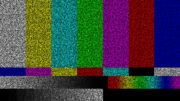Spend enough time measuring signals and you’ll realize they’re almost always negative numbers. Satellite signals, over-the-air antennas, cellular signals… always negative numbers. Even the volume numbers on your home theatre receiver are usually negatives. It’s all due to the confusing magic of decibels.
The confusing magic of decibels
Every couple of years I get it into my head that I should try to talk about decibels. These inevitably tend to be very unpopular articles which don’t make sense to a lot of people. So I try again. And here I am, trying again.
Before you understand why signal strengths are negative, you need to understand how decibels work. It’s not what you think. Most folks associate decibels with sound volume. That’s true, but it’s also just a small part of the stuff that’s measured in decibels.
In order to understand decibels, you need to understand first that they are a relative measurement. They don’t measure how much of something you have. They measure how much more or less of something you have, compared to something else.
Decibels are sort of like this. Everyone else in your workplace is making $75,000 a year. You’re making $60,000 a year. So let’s say that’s enough to pay your bills and all. So you’re not upset about the money you’re being paid. You’re upset because it’s $15,000 a year less than everyone else. That’s the basic idea of decibels. You measure what you have, compared to what someone else has.
The third letter really explains what you’re measuring
You’re used to thinking of decibels as a measurement of audio. We call that dBa, or decibel audio. It’s a measure of how much more sound pressure is being generated compared to a reference level.
We often measure radio frequency signals in dBm, which is short for decibel milliwatts. In other words, it’s how much more signal that you have compared to .001 watts. Often times you have less than .001 watts, which means the decibel numbers will be negative.
Measuring signals
Most signals are really, really weak. Just thousandths of a watt, really. Yes, you hear that radio stations broadcast at 50,000 watts, but that power dissipates really quickly. Unless you’re super close to that radio tower, you’re getting a tiny fraction of that.
Radio signals, TV signals, satellite signals, and cellular signals are often measured in dBm, as I said above. They are so weak that it’s normal to have signal levels from -70 to -120dBm. And that’s not all. Now here’s the most confusing part.
Decibels are logarithms
Now if you’re like most people those two words… decibel and logarithm… aren’t part of your daily vocabulary. So it’s hard to understand what they are. A logarithm is a representation of a power of 10. To put it as simply as I can, 10 decibels is ten times as much power. 20 decibels is 100 times as much power. 30 decibels is 1,000 times as much power. Are you still with me?
-10 decibels is 1/10th as much power. -20 decibels is 1/100th as much power. -30 decibels is 1/1000th as much power.
So, if you really wrap your head around it, the number in the tens place (1,2, or 3 above) is the number of zeroes. So 70dB would be 10,000,000 times as much power and -70dB is 1/10,000,000th as much power.
Doing it this way helps people deal with the fact that fractions get really tiny very quickly.
Getting back to signal level
So, a signal of -70dBm is 1/10,000,000th of a milliwatt. A milliwatt is 1/1000th of a watt, and a watt is about 1/20th of the amount of power it takes to light up a bright light bulb. So you see this a very weak signal indeed, about 5/100,000,000,000th of the energy it takes to light up a light bulb if I did my math right. Amazingly you can still get a TV signal from space with that amount of signal.
Confused yet?
I know it’s a lot to take in and by now you are very, very sorry you asked. But it’s enough to know that the numbers are negative because they are very very little bits of power, and that the further away from zero the number gets, the less it is. In other words, -120dBm is quite a bit less than -70dBm.





